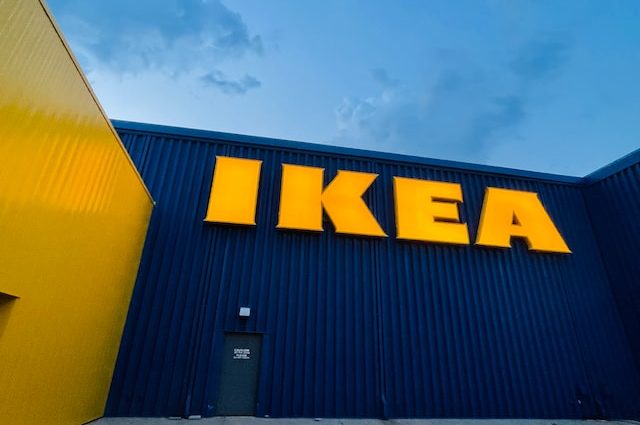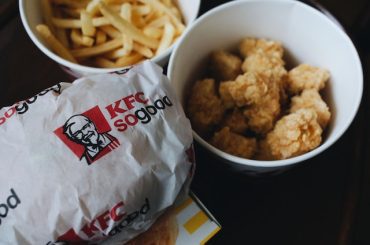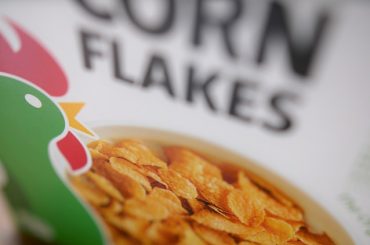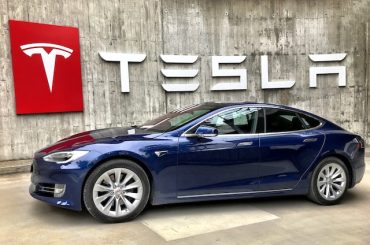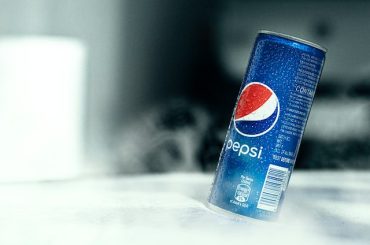Before we dive deep into the Marketing Mix (4Ps), let’s get the business overview of IKEA. IKEA is a multinational company specializing in designing, manufacturing, and selling ready-to-assemble furniture, kitchen appliances, and home accessories. Founded in 1943 by Ingvar Kamprad in Älmhult, Sweden, IKEA has become one of the world’s largest and most successful furniture retailers.
Business Model: IKEA’s business model is centered around providing affordable, functional, and stylish home furnishings to customers across the globe. The company achieves this through its unique combination of low-cost production, efficient supply chain management, and a self-service, warehouse-style shopping experience.
- Low-cost production: IKEA designs its products to be simple and easy to manufacture, which helps to reduce production costs. The company often uses flat packaging, which minimizes shipping and storage costs, and allows customers to assemble the products.
- Efficient supply chain management: IKEA maintains close relationships with its suppliers and works to optimize its supply chain, minimizing costs and ensuring timely delivery of products. This efficiency allows the company to maintain its competitive pricing.
- Self-service concept: IKEA stores are designed to facilitate a self-service shopping experience, with customers navigating through showrooms, picking up products from warehouse-like areas, and assembling the products at home. This approach reduces staffing costs and encourages customer involvement and satisfaction.
Global Presence: Since its inception, IKEA has expanded its operations to over 50 countries, operating more than 400 stores worldwide. In addition to its brick-and-mortar locations, IKEA also uses an e-commerce platform, allowing customers to purchase products online and deliver them directly to their homes.
Sustainability and Social Responsibility: IKEA is committed to sustainability and minimizing its impact on the environment. The company invests in renewable energy, focuses on using sustainable materials in its products, and aims to become a circular business by 2030. Additionally, IKEA is involved in various social initiatives and partnerships, such as working with UNICEF and Save the Children to improve the lives of needy children.
Financial Performance: IKEA’s revenue in FY23 reached EUR 29.063 billion (EUR 27.578 billion in FY22). IKEA generated net income of EUR 1.639 bn in FY23.
Here is the Marketing Mix (4Ps) of IKEA
A marketing mix, also known as the 4Ps of marketing, is framework marketers use to develop and implement effective marketing strategies. The concept helps businesses identify and optimize the key components necessary to promote and sell their products or services. The 4Ps of the marketing mix are Product, Price, Place, and Promotion.
In addition to the traditional 4 Ps, marketers have expanded their strategies by incorporating additional elements (People, Process & Performance) to help them better understand and reach their target audiences. But we will focus on the 4Ps as they still are the foundation of any marketing strategy. In this article, we will understand the marketing mix (4Ps) of IKEA.
What is a Marketing Mix? What are the 4Ps of Marketing?
Product
- Functionality and design: IKEA’s products are designed with functionality and aesthetics in mind, making them visually appealing and user-friendly. The company’s Scandinavian design philosophy emphasizes simplicity, minimalism, and functionality.
- Affordable pricing: One of IKEA’s key competitive advantages is its affordable pricing strategy. By offering products at lower prices than competitors, the company appeals to a broader range of customers, including budget-conscious shoppers.
- Flat-pack and self-assembly: IKEA’s flat-pack furniture is designed for self-assembly, which reduces shipping costs and storage space requirements. This saves the company money and allows customers to transport and assemble their purchases easily.
- Customization and modular solutions: Many of IKEA’s products are designed to be customizable and modular, allowing customers to create personalized solutions for their homes. This flexibility enables customers to adapt their living spaces according to their needs and preferences.
- Range and variety: IKEA offers a wide range of products in various categories, colors, and styles, catering to different customer preferences and ensuring there is something for everyone.
- Sustainability: IKEA is committed to sustainability and constantly works to reduce its environmental impact. The company has introduced eco-friendly products, uses renewable and recycled materials where possible, and aims to achieve a circular business model.
- Continuous product development: IKEA continually updates and expands its product range to meet changing customer needs and market trends. The company invests in research and development to create innovative solutions that appeal to its target audience.
Price
- Cost leadership: IKEA’s primary goal is to offer high-quality products at low prices. The company achieves this by implementing cost-saving measures throughout its supply chain, such as bulk purchasing of raw materials, efficient production processes, flat-pack shipping, and self-assembly.
- Economies of scale: IKEA leverages its global presence and massive production volumes to achieve economies of scale, which helps lower production costs. These cost savings are passed on to customers in the form of lower prices.
- Value-based pricing strategy of IKEA: IKEA’s pricing strategy focuses on delivering value to customers. The company ensures that its products are affordable but also of high quality, well-designed, and functional, making them an attractive option for various customer segments.
- Market penetration pricing: In new markets, IKEA may use market penetration pricing to attract customers and establish a strong presence. This approach involves setting lower prices to encourage customers to try IKEA products and to gain market share quickly.
- Competitive pricing: IKEA continuously monitors its competitors’ pricing strategies and adjusts its prices accordingly. The company aims to maintain a competitive edge by offering better value for money than its competitors.
- Price differentiation: Although IKEA is known for its low prices, it offers a range of products at different prices to cater to diverse customer needs and budgets. This allows customers to choose from various options based on their preferences and financial constraints.
- Promotional pricing: IKEA occasionally offers promotions, discounts, and special deals to incentivize customers to purchase. These tactics drive sales, help clear inventory, and make room for new products.
Place
- Large-format stores: IKEA is known for its massive, warehouse-style stores located in suburban areas or on the outskirts of cities. These stores offer a vast range of products under one roof and are designed to provide a unique shopping experience, with room settings, displays, and a self-service warehouse section. The large store format allows IKEA to showcase its extensive product range, manage inventory efficiently, and reduce operational costs.
- Strategic store locations: IKEA carefully selects store locations to ensure maximum visibility, accessibility, and convenience for customers. The company typically chooses locations near major highways or transportation links, making it easy for customers to visit the stores and transport their purchases.
- E-commerce: Recognizing the growing importance of online shopping, IKEA has invested in its e-commerce platform to reach customers who prefer to shop online. The company’s website and mobile app allow customers to browse products, plan their purchases, and order online for home delivery or in-store pickup.
- In-store pickup and delivery options: To cater to different customer preferences, IKEA offers various fulfillment options, such as in-store pickup, home delivery, and assembly services. This flexibility lets customers choose the most convenient method, enhancing customer satisfaction.
- Market-specific adaptations: IKEA adjusts its distribution strategy to cater to specific market conditions and customer preferences. In some countries, the company has introduced smaller urban stores or showrooms to reach customers in densely populated areas where large-format stores may not be feasible.
- Global supply chain: IKEA’s efficient and cost-effective supply chain is essential to its Place strategy. The company sources raw materials from multiple suppliers worldwide, manufactures its products in various countries, and transports finished goods to distribution centers and stores. This global approach enables IKEA to optimize costs, maintain quality standards, and ensure a steady supply of products.
- Sustainability: IKEA is committed to sustainable practices across its distribution network. The company is continuously working to reduce its carbon footprint by optimizing transportation routes, increasing the use of renewable energy, and minimizing packaging waste.
Promotion
- Advertising: IKEA uses a mix of traditional and digital advertising channels to reach its target audience. These include television commercials, print ads, billboards, online ads, and social media campaigns. IKEA’s advertisements often emphasize its product range, affordable prices, and design philosophy, creating a distinct brand image.
- Catalog: IKEA’s annual catalog has been a crucial promotional tool for the company for decades. The catalog showcases the company’s product range and inspires home furnishing and décor. Although IKEA has shifted towards digital channels, the catalog remains essential to its marketing strategy.
- Digital marketing: Recognizing the growing importance of online channels, IKEA has invested in digital marketing to engage with customers and promote its products. The company uses social media platforms, email marketing, content marketing, and search engine optimization (SEO) to reach its target audience and create buzz around its offerings.
- In-store promotions: IKEA’s stores are designed to promote its products effectively. The company uses room settings, displays, and signage to showcase its products and inspire customers. Additionally, IKEA occasionally offers in-store promotions, such as special deals, discounts, or events, to drive sales and customer engagement.
- Public relations: IKEA employs public relations strategies to maintain a positive brand image and manage its reputation. The company engages with the media, organizes events, and participates in trade shows to share its story, announce new products, and discuss sustainability initiatives. Content Marketing in PR: All you need to Know
- Sponsorships and partnerships: IKEA engages in sponsorships and partnerships to increase brand visibility and reach new audiences. The company collaborates with designers, artists, and other organizations to create limited-edition collections, develop innovative products, and support social and environmental causes.
- Loyalty programs: IKEA offers a loyalty program called IKEA Family, which aims to build long-term customer relationships. Members of the program receive exclusive discounts, special offers, and access to events, which encourages repeat purchases and customer loyalty.

